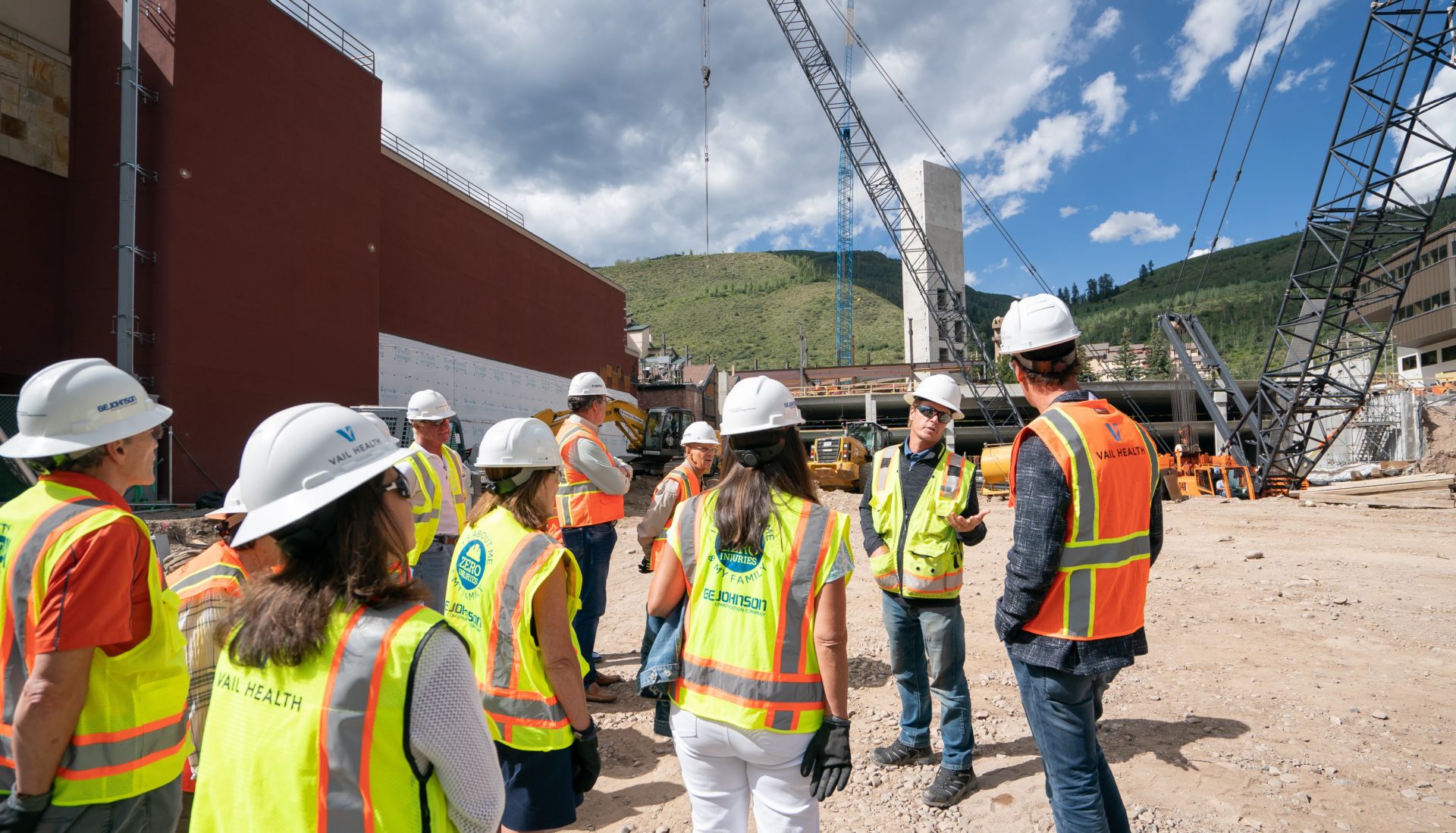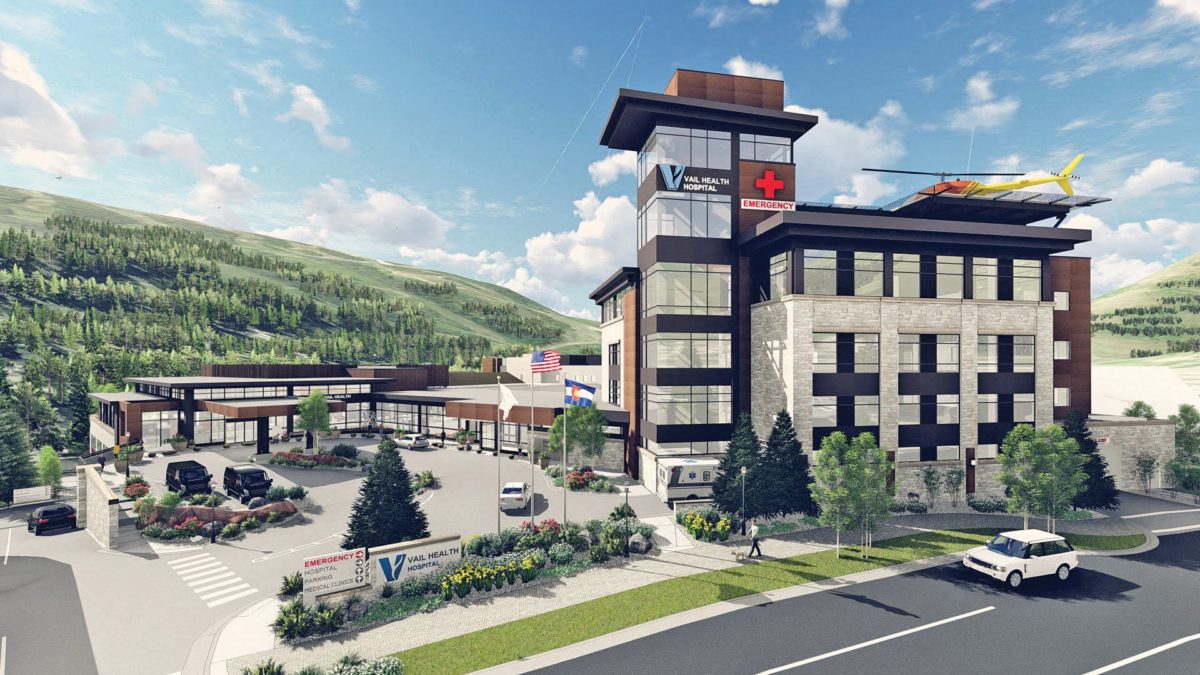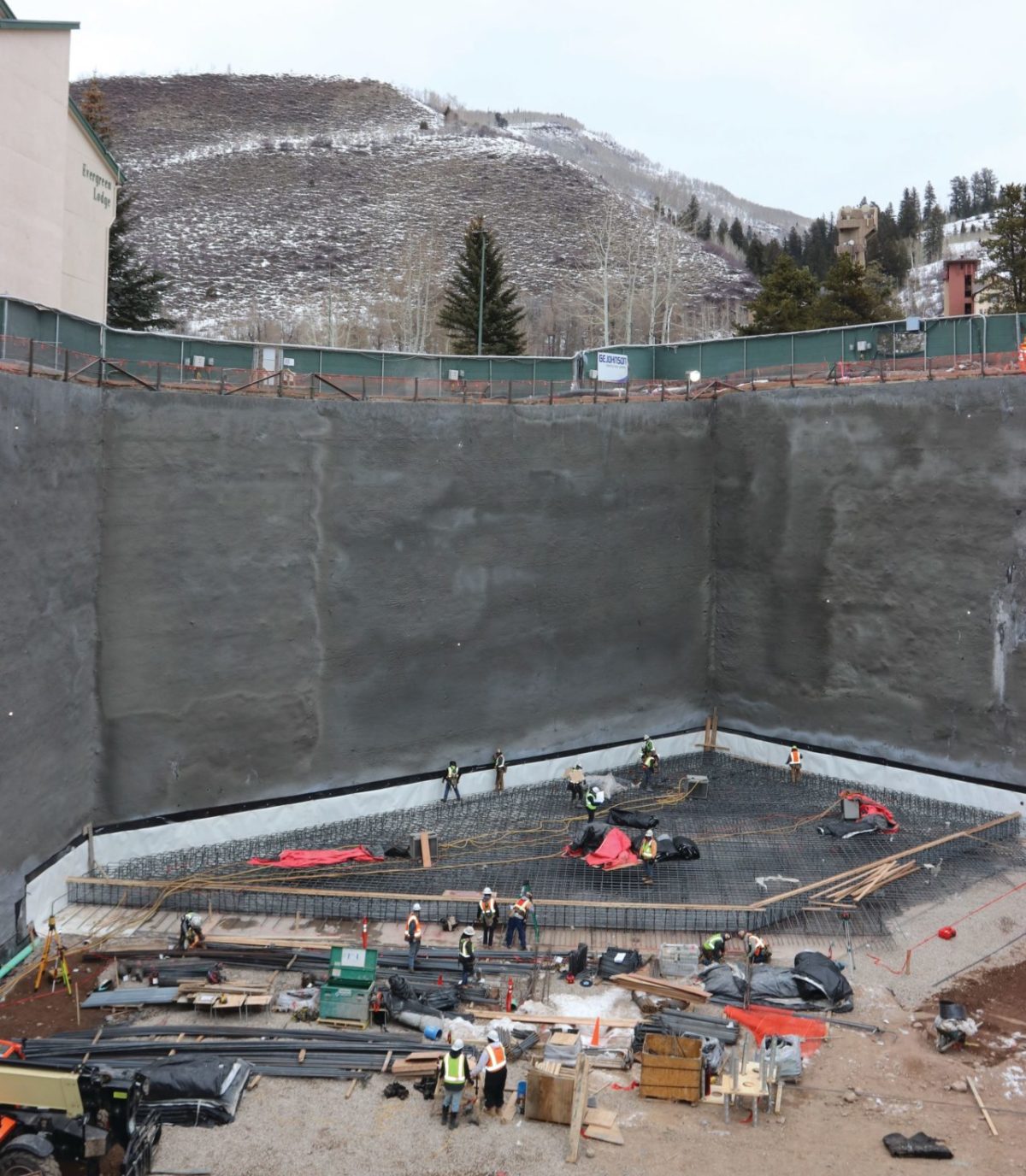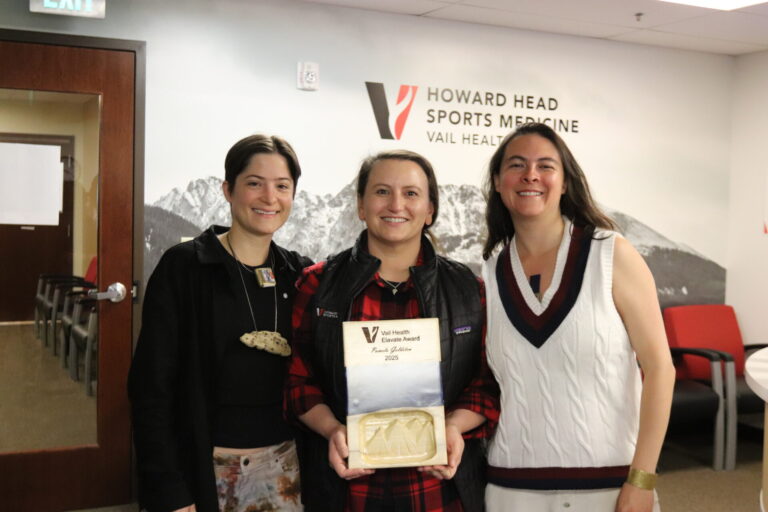Tales From the Construction Zone: Vail Health’s East Wing Takes Shape

Vail Health’s East Wing is scheduled to open for patient care in late 2020, and the construction team is hard at work to meet that goal. The community’s hospital of tomorrow will look and function very differently from the old medical center many remember. While it served the community and our visitors well for over 50 years, the basic mechanical and electrical systems were ready for upgrades and replacement; medical spaces were disjointed, confined and inefficient; and the facility had not kept pace with the rapidly changing health care industry or other mountain hospitals.
When the project is complete, the community and our visitors will benefit from a new state-of-the-art Emergency Department, a relocated helipad on the medical center campus with direct access to the hospital, increased parking capacity, appropriate medical space for physician groups and a new main entrance off S. Frontage Road, thereby removing 100% of patient, visitor, emergency and staff traffic from W. Meadow Drive and improving the pedestrian experience in that area.
There are 80-90 workers on site most days, and if they weren’t so busy building a hospital, they’d tell you some great stories about what makes this project so interesting. Here are a few.
Hitting Rock Bottom
When the goal is to dig 65 feet below grade, you celebrate hitting “rock bottom” when you get there. After removing 2.5 million cubic feet of dirt, concrete and steel — 1.8 million of which was recycled — the space where the old Vail Clinic and hospital parking garage once stood could best be described as a chasm.
Over 600 million gallons of underground water was diverted from around the construction site. The water was filtered from 35 on-site wells to remove sediment, at which point it was tested by a lab to ensure purity. It was then returned to the riparian stream between Vail Health Hospital and Dobson Arena.
This operation prevented the construction site from becoming a mud pit, and added clean water to the stream. Peering down inside the giant hole, construction workers looked tiny as they began laying a 4-foot thick foundation for the lowest level of Vail Health’s new parking garage.
Built to Last
Studies have shown that kids who play with Legos develop dexterity, problem-solving, planning, teamwork and math skills. Some of those kids grow up to work for pre-cast concrete installation companies like the one Vail Health has used to build the new east wing and parking garage.
The structures of these buildings were prepared, cast and cured in a factory in Colorado Springs. The process is called pre-casting, and it’s more effective than on-site casting in terms of cost, labor and time. Pre-cast concrete also offers better quality and longevity. Each piece of concrete goes through a testing process to ensure strength and stability. All together, Vail Health is using 1,040 pieces! Slabs weigh anywhere from 10,000-30,000 pounds, and all of the pieces were stored on a lot the size of a football field.
In Spring 2019, we began the adult-style Lego work of fitting all the pieces together to form a five-story parking garage and an eight-story hospital building. Each piece of concrete is designed with embedded connection points that are joined together and welded. Thankfully, unlike a Lego set, these blocks are built to last.
What a Beast
Over the years, King Kong faced off with Godzilla, Gorosarurus and even the Skull Island Python. In 2019, King Kong took on Vail Health.
Passersby couldn’t help but notice the 500,000-pound crane rising from Vail Health’s construction site. Meet the “King Kong 300” (as in 300 tons). This beast can lift up to 40,000 pounds at once, and the boom stretches 240 feet into the sky.
Thanks to the King Kong, the walls of the new parking garage and porte-cochère are in place. Unlike the “real” monster of lore, our King Kong came and went quietly, making only constructive progress.
Why a New Emergency Department?
For over 50 years, Vail Health has patched up, cured and cared for our community and visitors when they’ve needed us most. Our Emergency Department (ED) is the only Level III trauma center in Eagle County, and it’s one of the busiest in Colorado. Serving a community of about 60,000 residents, plus tens of thousands of adventurous tourists on any given day, is a feat in our current ED, which is now one of the oldest parts of the building on campus.
Designed in coordination with physicians and nursing staff, the plans for Vail Health’s new Emergency Department address current space constraints and the community’s changing health care needs.
- The new ED will provide 51% more square feet of space than our current ED.
- There will be 19 exam beds and 12 private rooms— two more exam beds and nine more private rooms than we currently have. Three of the rooms will be specially designed for behavioral health, and one room will be equipped for forensic examinations.
- Two centralized nurse’s stations will improve visibility of the department and circulation efficiency.
- Patients arriving by ambulance or skier transport will be brought in via a new ambulance garage for privacy and protection from the outdoor elements.
- Patients and visitors arriving in a personal vehicle or shuttle will have quicker/easier access to the ED from our new plaza entrance on S. Frontage Rd.
- Adjacencies will be improved by adding a new ambulance garage and imaging department directly next to the ED, and the outpatient pharmacy will be relocated nearby.
- An elevator within the department will take critical patients swiftly upward to the new on-site helipad, reducing travel time when minutes matter and ensuring the safety and efficiency of transport.
Moving Parts
When Vail Health originally contemplated the Master Facility Plan, the idea of building a brand new hospital in a different location was considered, but quickly dismissed. It certainly would have been easier to work with a blank canvas; however, the community’s needs for a hospital in the heart of Vail remained a priority.
Renovating and expanding the Vail campus has required a high level of flexibility as a myriad of moving parts must fall into place. A Master Plan Logistics Team and Moves Committee was formed to coordinate over 60 moves that impacted over 150 staff members, all of whom graciously accepted the moves as “growing pains” in the process of building the world’s most modern mountain hospital.
Big Dumps = Big Headaches
While most of us rejoice over big snowfalls, those in the construction world equate big dumps to big headaches. The freezing temperatures of last winter made digging a foundation and pouring concrete tough tasks. In order to dig into frozen ground, Vail Health’s construction team had to use hydronic ground thaw machines, which circulate hot water into long, winding pipes that are then covered by insulating blankets to keep the ground warm. To prevent the concrete from freezing while it was being placed, giant furnaces on the construction site pumped heat under insulation blankets to maintain concrete temperatures above 50° Fahrenheit.
In addition to keeping the construction site warm and clear of snow, there is always concern for keeping the construction workers safe from the elements. Warm layers are essential, and breaks are common in the winter to allow the workers to get inside and warm up.
So, while you pray for a big snow year, please also request a few warm days for the construction team to work on this monumental project!




